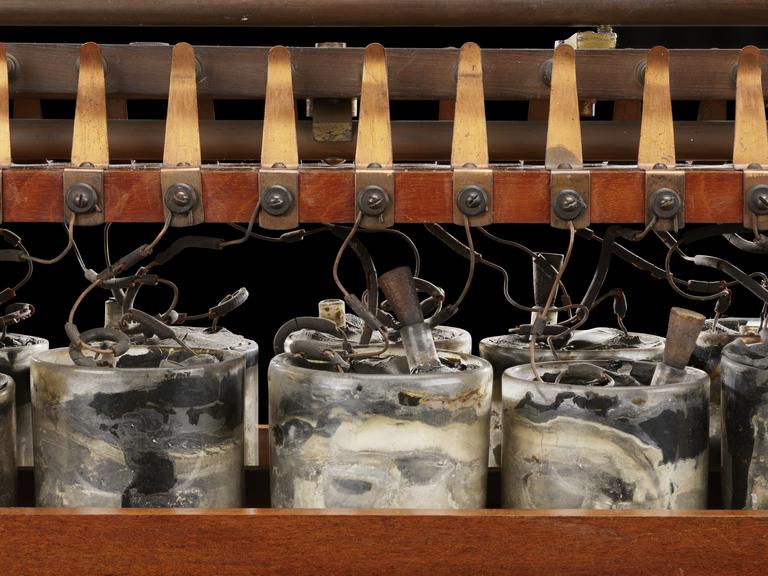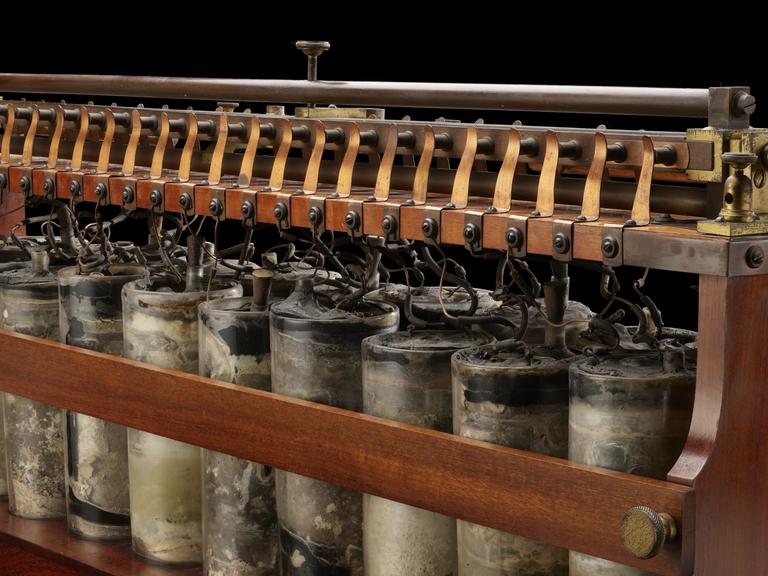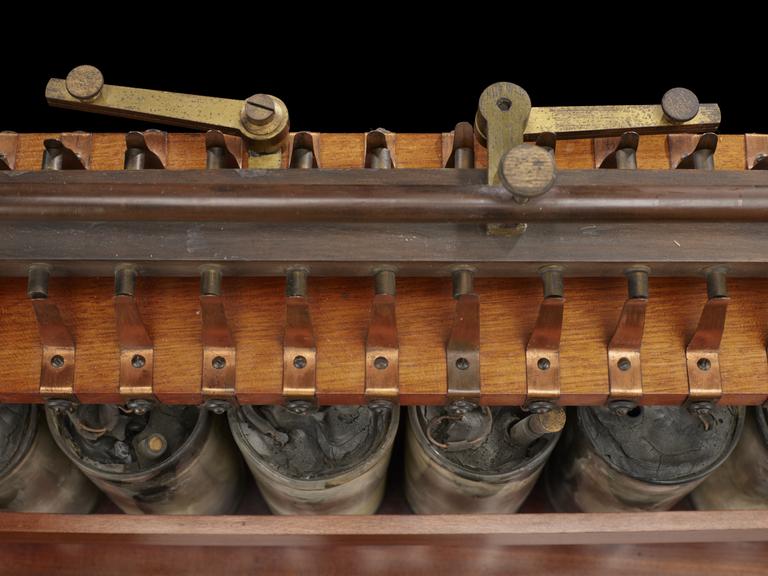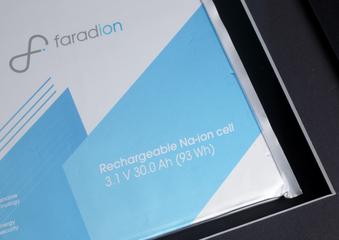
One of the First Rechargeable Batteries, about 1860
- maker:
- Gaston Planté






















The first practical lead-acid storage battery. Made by Gaston Planté in London around 1860.
The secondary cell (or rechargeable cell) in which the positive active material is lead peroxide, the negative active material is pure lead and the electrolyte is dilute sulphuric acid, was introduced by French physicist Gaston Planté (1834-1889) in 1860. It was the first practical storage battery.
The battery shown here dates from around 1860 and consists of 20 cells, arranged in a form used for experimental and laboratory purposes, with a switch for connecting the cells either in series or in parallel.
Details
- Category:
- Electricity Supply
- Object Number:
- 1887-70
- Materials:
- glass, wood (possibly teak), pitch or bitumen insulating materials, rubber-covered wiring, copper alloy and lead
- Measurements:
-
overall: 310 mm x 715 mm x 160 mm, ,
- type:
- batteries
- credit:
- Normal School of Science (Physical Laboratory)




